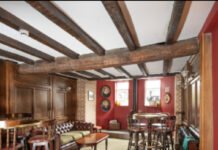As the Coronavirus continues to spread-About Manchester goes back over 400 years to when Plague arrived in Manchester and may well have killed a quarter of the population
Plague arrived in Manchester in April 1605, it reached its peak in July and only subsided in November of that year.
It wasn’t the first time that Manchester, then a small town of around 3,000, had been hit, plague had arrived in the summers of 1588 and 1598 but the records suggest that this outbreak was much more virulent.
In August there were no christenings due to “extremitye of the sickness and over the summer there were no weddings for the same reason and the Court Leet was not held.
Manchester was governed by the Lord of the Manor, Sir Nicholas Mosley and administered by its Court Leet, at the time made up of around one hundred individuals which sat twice a year.
Various measures were introduced to alleviate the issues including the levying of a local tax to help the victims while in June anyone entering the town had to have a certificate indicating that they were free of the plague.
The Salford Hundred was ordered to pay £56 a week for relief, that was extended eventually across the country, the money being used to make weekly payments to the needy of seven pence and of one shilling to the infected.
People who had been moved for their cabins on Collyhurst Common were entitled to receive one shilling and four pence a week.
The scale of the outbreak was obvious.In August payments were made to 1605 people in the townships of Manchester and Salford.
It is difficult to quantify the scale of deaths as the population or the areas covered are difficult to access but it is estimated that maybe between a quarter and a fifth of the population may have died.
There is evidence that the better off escaped the town that summer, 33 people had left including three members of the Mosley family and the High Master of the Grammar School as well as some jurors and officials of the Court Leet.
Manchester recovered, its fall in population was temporary and by the 1630’s had reached the levels of thirty years previously.
The effect on its principle business of the manufacture of linen and woollen cloth was negligible and by the 1620’s the great manufacturing names of that industry, the Chetham’s, the Booth’s and the Wrigley’s had emerged







